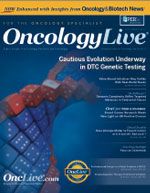Enterprising Approaches
Separating hype from hope has often been problematic when developments that may lead to advances in the oncology field enter the public domain. The mapping of the human genome and the ability to characterize mutations associated with cancer have spawned one of those waves of excess promises.
OncLive Chairman,
Mike Hennessy
Separating hype from hope has often been problematic when developments that may lead to advances in the oncology field enter the public domain. The mapping of the human genome and the ability to characterize mutations associated with cancer have spawned one of those waves of excess promises.
It was in such an atmosphere that the direct-to-consumer (DTC) genetic testing industry was born more than a decade ago. Amid technological advances that made genetic analysis more plausible and cost effective, companies promising to discover the hereditary risks of many diseases including cancer sprouted in the marketplace.
The industry’s claims brought the scrutiny of federal regulators who questioned the accuracy and legitimacy of the science being sold to the public. Now, the FDA asserts that DTC genetic tests are medical devices that must be validated before they can be legitimately marketed to the public.
Does that mean the DTC genetic testing industry is dead? Not at all, as our cover story in this issue, “Cautious Evolution Underway in DTC Genetic Testing,” describes. The FDA has approved a DTC test for adults at risk for the rare Bloom syndrome. Companies offering tests in the oncology arena are doing so through a hybrid model of consumer-friendly websites that require an order from a physician or healthcare provider.
It should be quite interesting to see how this industry matures. Greater access and possibly lower prices for the public are among the potential benefits. There are potential harms of misinformation, particularly if people do not seek medical treatment or advice based on the results of an over-thecounter test.
These are among the factors that must be weighed as the industry moves forward. The private enterprise model has delivered many benefits in American healthcare. It’s vitally important that we strike a balance between our legitimate responsibility to protect the public and a regulatory atmosphere that stifles innovation. Notably, a more action-oriented FDA approved more new drugs in 2015—more than one-third of which were for oncology indications—than in any single year in at least the past decade. Although there have been some concerns that the agency may be moving too quickly and much debate over the price of these new therapies, there’s no arguing with the fact that having a medicine cabinet stocked with state-of-the art drugs is a wonderful development for patients. Please let us know your thoughts on these matters and, as always, thank you for reading.




